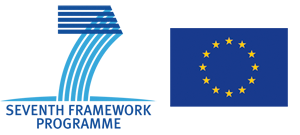ESR2: Characterisation of the redox status inside dopamine neurons using conditional transgenic mouse models
Moussa Wardé (Universidad de Salamanca)
Supervisor: Juan Pedro Bolaños
Project summary
The first year of the project was more a training and preliminary studies on the metabolic status of the neurons in culture in different conditions of oxygen control. For this we acquired an Hypoxic chamber able to maintain a specific oxygen concentration stable and got used to the different manipulation manners. This first year training was focusing on settling the primary neurons cultures of embryonic day 15 (E15) from mice C57Bl6 and establishing the optimum culture situation for a co- culture of astrocytes on top of neurons, as we believe something is happening at this level, and maybe coming from astrocytes and would be disturbed in neurodegerative disease as Parkinson ́s Disease (PD) leading to a whole metabolic disorientation of the dopaminergic neurons, the main cells degenerating in the PD. As oxygen seems so important in metabolic control, we wish to study the physiological more realistic behavior of these neurons in a condition of oxygen concentration close to that existing in the biological physiological systems. Thus we worked on simulating this situation with the hypoxic chamber we got, using concentration of oxygen described in the litterature to be physiological. Therefore we try to characterize at a whider level what is happening molecularly when cultures are at physiological oxygen levels, hence we look deepely on what is happening, we investigate the glycolysis, the membrane potential, the apoptosis rate, the ATP generation and different physiological sequences that would be potential clues to avoid neurodegeneration.
The specific aims of the project are
(i) To evaluate the oxidative metabolism under physiological oxygen conditions in
comparison with the superoxical 21% O2 normally used in cell cultures incubators.
(ii) To study the effect of co-culturing astrocytes and neurons on neuronal-astrocytic metabolic and redox interactions.
(iii) To contribute to understand the main molecular factors lost in neurons, relevant to some neurodegenerative diseases, such as Parkinson's Disease.
Aim (i)
As described briefly in the summary, we aim to evaluate the oxidative metabolism under physiological oxygen conditions and to compare it with the normal oxygen concentration (21%) used in cell cultures. We look to measure the different reactive oxygen species (ROS) like hydrogen peroxide (H2O2) and superoxide anion (O2-) by different methods like the amplex red, a fluorometric assay, measurment of mitosox by flow cytometry. Measurments of ATP production, apoptosis and cell proliferation in both culture situation, and HIF-1α (hypoxia-inducible factor) evaluation are scheduled.
Aim (ii)
It is significant that the astrocytes are present at a very high level in the brain, and that a lot of studies are trying to understand the function they are assuming. Somehow these glial cells are participating to the protection of the neurons, or at least participate in an unclear way to the surviving of the neurons, apart of the nutritional, support and other hypothesized functions. If these cells have some important relationship with neurons, it may be a clue to the understanding of the degeneration happening in the brain of patients. We aim to understand the effect of co-culturing these cells on neuronal metabolic behaviors.
Aim (iii)
Once the study of co-cultres gets clear we would like to try to understand if the participation of the astrocytes to the neuronal survival would be through a molecular way, liberating factors to the neurons leading to their protection and in case of its failure to the cell death. Furthermore, we would like to participate to clarify what factors would emanate from astrocytes and possibly protect neurons. The potential factors would be analyzed and amplified using the Rt-PCR techniques. Wester Blot techniques would serve during the different phases of the project to respond to basic protein questions we would suspect.
Results [top]
In progress.
Outputs [top]
In progress.
Training [top]
(i) Local level
I. Course for operating with living animals, category B (Salamanca, February 2015)
II. Course "Oral presentation and communication: strategies and new technologies"
(Universidad de Salamanca, September 2015)
(ii) Network level
I. NMR Mini Boot Camp of BioBank Analyses and Metabolomic Transformation (Dublin, November 2014)
III. Training in mitochondrial and cellular respiratory physiology (Dublin, May 2015)
IV. Neuronal Cell Metabolism (Dublin, May 2015): with the support of Doctor Gavin Davey's team we had the possibility to saw how to
detect metabolic transformation, a universal property of tumour formation, using Seahorse instruments
Outreach [top]
Participated in the Open Day in the Institute of Functional Biology and Genomics (IBFG) which it took place on
May 7th, 2014

